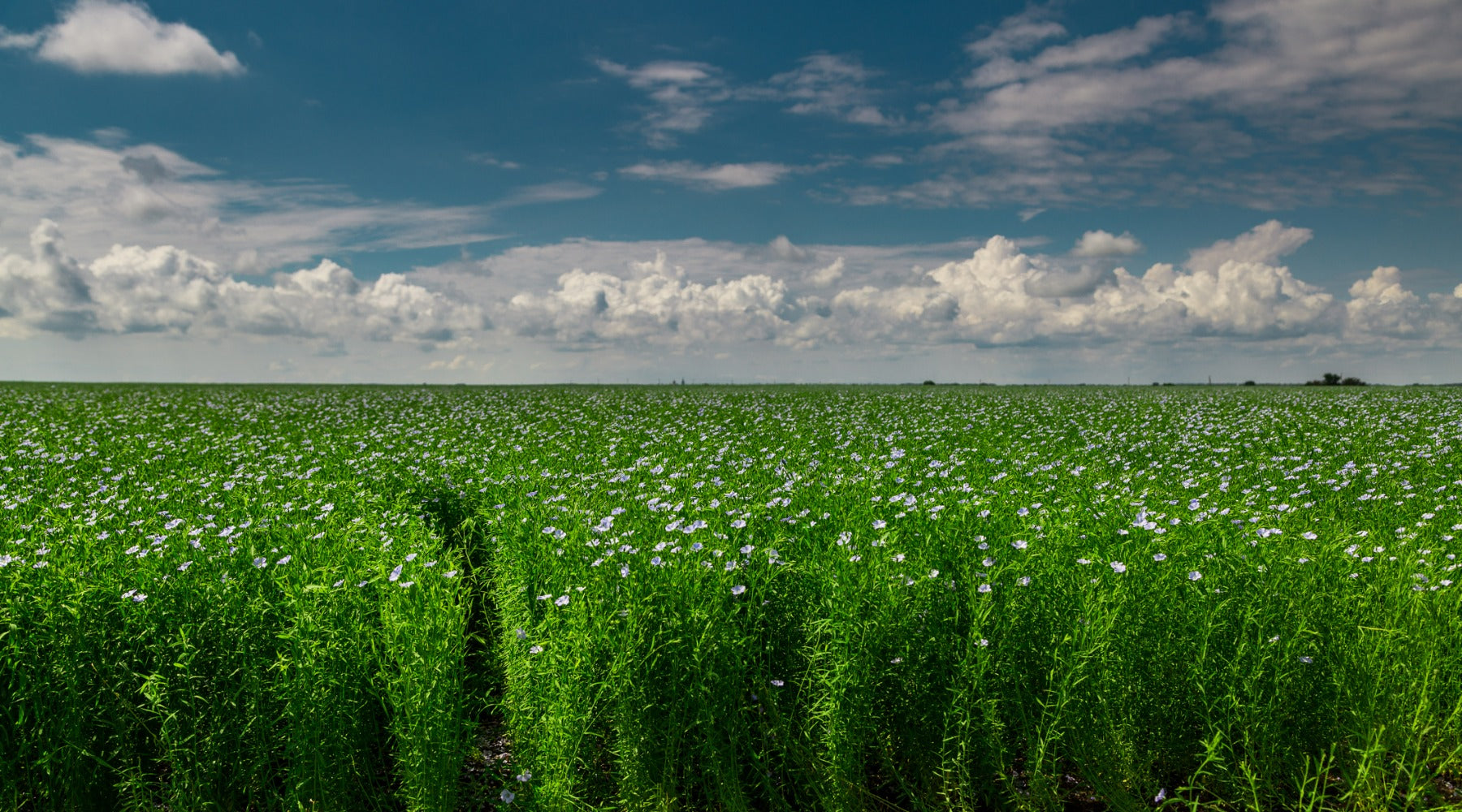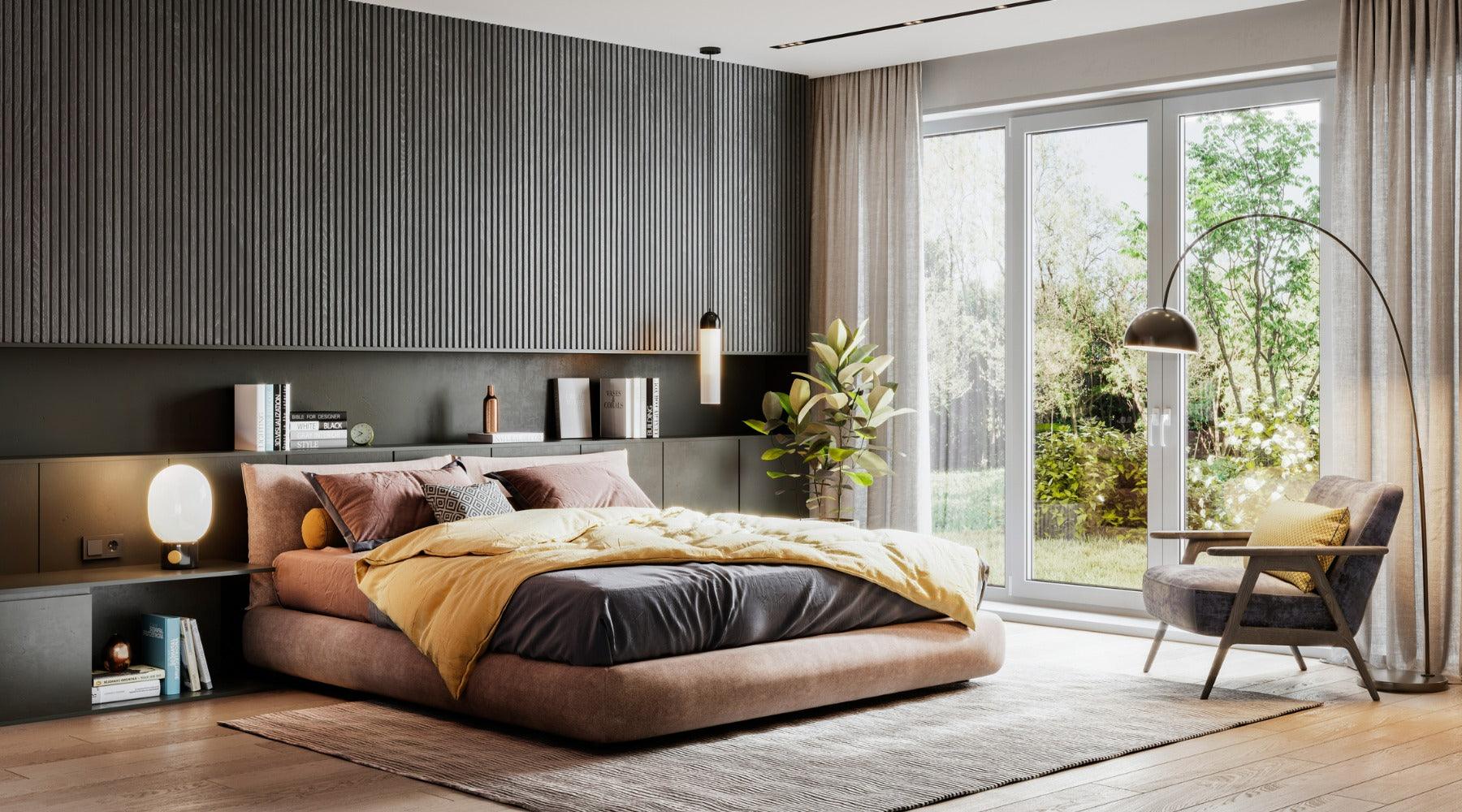
What is Linen Made From?
In this age of greenwashing and artifice, it's reasonable to ask where our products come from. In this post, we examine the all-natural origins of linen and explain why you can buy our organic linen bedding without guilt.
European Flax—All-Natural and Organic
The linen that goes into our organic linen duvet covers is made from European Flax grown organically in France, Belgium, and the Netherlands—a region known as the “flax belt” of Europe.
In this part of the world, the climate is damp and cool: conditions to which flax is naturally habituated. Flax grows well here without the need for artificial irrigation; this contrasts with the resource-intensive cotton plant, which requires 1,000 gallons of water to produce just one pound of fabric. Though flax can grow well in a variety of soils, it grows best in loam, a soil comprising equal parts sand and silt (sedimentary particles). On average, 100 square feet of flax crop produces one pound of linen yarn.
European Flax is not just a statement of location, it’s a certification: anyone growing it must abide by strict regulations. European Flax farmers must sign the European Flax Charter, agreeing to local, environmentally-friendly farming, which uses no artificial irrigation and no genetically modified organisms (GMOs).

What Does Flax Look Like?
From the beginning of May, flax fields across northern Europe fill with delicate blue, five-petaled flowers (you can see what they look like on our Hørblomst Scandi-style bedding). These blooms last just one day, though they can appear anytime between May and September. After the flower dies, a small, hard seed pod is left over; in the case of flaxseed production, this is left to dry out completely.
Flax stems are tall and slender; flax planted for textile production reaches from 3- to 4-feet in height, but averages only 0.1 to 0.16 inches in diameter. The small, pointed leaves alternate up the stalk.
Organic Flax Linen—Strong and Durable
Flax belongs to the same family of plants as jute and hemp—fibers made from these plants are known as bast fibers. Unlike cotton, which is made from many single-celled fibers woven together, bast fibers are several cells thick.
Organic linen, therefore, is extremely strong and durable—even a linen-fitted sheet, subjected to daily wear, will last a minimum of three years. Other linen garments last much, much longer: ancient Egyptian mummies dating back to 5,000 BC are still wrapped in linen bandages. There have even been scraps of linen found in prehistoric caves, estimated to be 38,000 years old! This makes flax linen the world’s oldest textile.
As you might imagine, flax stems are extremely difficult to cut. For this reason, at harvest time, flax stems are not cut but pulled from the ground—this also preserves the length of the fiber.

Two natural compounds, pectin and lignin, are present in abundance in flax stems. Pectin helps to keep cell walls hydrated; lignin helps to strengthen cell walls and gives the stem rigidity. Overall, levels of pectin and lignin in flax are around 2.5% and 2%, respectively.
As both compounds have a strengthening role in flax growth, both are responsible for the stiff, sometimes rough texture of flax linen. Lignin is insoluble in water; however, pectin is soluble, with more pectin dissolving after every wash. This is why linen becomes softer over time with use and repeated washings.
At The Modern Dane, however, we don’t think you should have to wait that long—we garment-wash our organic linen bedding so that it’s already soft by the time it arrives. Don’t believe us? Buy a fabric swatch to test it yourself.
The Flax-Harvesting Process
Flax plants are harvested roughly 30 days after flowering, usually in the second half of July. Timing is important: farmers have just a one or two day window to obtain the best possible linen fiber. If they harvest too early, the fibers will be too fine and the seeds not yet ready to start a new crop of flax plants next year. Harvest too late, however, and the fiber will be both coarse and brittle. Farmers use visual cues, weather observations, and complex calculations to figure out when this window will fall each year.

As mentioned before, the linen is pulled from the ground using machines, then laid on the damp field for approximately three weeks. The outer flax stem dissolves during this time, leaving the flax fibers behind. These are then sent to a processing plant for scutching—a fully mechanical process that separates long fibers (used for bedding) from short ones (used for industrial materials).
European Flax Linen—a Sustainable Textile for Our Times
We’ve already outlined some of the factors that make organic European linen a sustainable bedding material. But did you know that flax is a waste-free crop from the start to the end of the production process?
It starts in the field: once the flax fibers have been removed, what’s left goes on to make animal fodder, paper, and varnish. The flax roots are left in the ground to biodegrade and provide fertilizer for the next flax crop. At the end of its lifespan, undyed linen bedding is fully biodegradable, meaning that it will not hang around in landfill for years to come.
Flax is naturally pest-resistant, making it relatively easy to farm organically. No harsh chemicals are used in the flax growing and harvesting process, which preserves local ecosystems and community health. When buying linen products, be sure to check for European Flax, GOTS, and OEKO-TEX certification, which indicate that your linen bedding has been produced in the most ethical and sustainable way possible. Our organic linen duvet covers carry all three certifications, so you can shop guilt-free—and we’ll offset the carbon emissions from shipping too.
Have you ever seen flax fields in Europe? Are you tempted to give organic linen bedding a go? Let us know on Instagram, Pinterest, Facebook, or Twitter!






Leave a comment
This site is protected by hCaptcha and the hCaptcha Privacy Policy and Terms of Service apply.